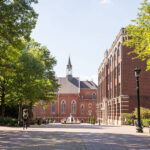France, a nation synonymous with romance, history, and exquisite culture, beckons travelers from every corner of the globe. But Where Is France exactly? Nestled in Western Europe, France boasts a captivating geographical tapestry, bordered by diverse landscapes and vibrant neighboring countries. Understanding France’s location is the first step to unlocking the treasures this remarkable country holds.
France is a country located in Western Europe. It is bordered by the Bay of Biscay and Spain to the west, Belgium and Germany to the north, Switzerland and Italy to the east, and the Mediterranean Sea to the south. This strategic location has historically placed France at the crossroads of European culture and commerce.
Image: The iconic Eiffel Tower illuminated at night in Paris, France, showcasing the country’s romantic allure and architectural grandeur.
Exploring France’s Diverse Geography
France’s geographical diversity is one of its most compelling features. From the towering peaks of the Alps to the sun-kissed beaches of the French Riviera, the country offers a breathtaking range of landscapes:
- Mountains: The Alps in the east and the Pyrenees in the south form natural borders and provide stunning scenery and world-class skiing opportunities. Mont Blanc, the highest peak in the Alps, stands majestically on the French-Italian border.
- Rivers: Major rivers like the Loire, Rhône, and Seine have shaped French history and culture, offering fertile valleys, picturesque landscapes, and crucial waterways for trade and transportation. The Seine, flowing through Paris, is particularly iconic.
- Coastlines: France boasts extensive coastlines along the Atlantic Ocean, the English Channel, and the Mediterranean Sea. These diverse coastlines range from rugged cliffs and sandy beaches to glamorous resort towns and bustling ports.
- Plains and Hills: Vast plains and rolling hills cover much of France, particularly in the north and west. These areas are vital for agriculture, producing renowned French wines, cheeses, and other culinary delights.
Image: Lush vineyards stretching across the landscape in Bordeaux, France, highlighting the country’s rich viticultural heritage and picturesque rural scenery.
Key Regions and Cities in France
France is divided into 18 administrative regions, each with its unique character and attractions. Some of the most famous regions and cities include:
- Paris: The capital city, a global hub for culture, fashion, gastronomy, and art. Iconic landmarks like the Eiffel Tower, Louvre Museum, and Notre Dame Cathedral draw millions of visitors annually.
- Provence: Located in southeastern France, known for its lavender fields, vineyards, charming villages, and Mediterranean coastline. Cities like Marseille and Nice are popular destinations.
- French Riviera (Côte d’Azur): A glamorous Mediterranean coastline famous for its luxurious resorts, beaches, yacht-filled harbors, and vibrant cities like Cannes and Saint-Tropez.
- Loire Valley: Known as the “Garden of France,” famous for its fairytale châteaux, vineyards, and picturesque towns along the Loire River.
- Brittany: A northwestern region characterized by its rugged coastline, Celtic heritage, and charming fishing villages.
- Normandy: Located in northern France, known for its historical D-Day landing beaches, picturesque countryside, and charming towns like Rouen and Honfleur.
- Bordeaux: World-renowned wine region in southwestern France, famous for its prestigious vineyards and elegant city of Bordeaux.
Image: The stunning Mont Saint-Michel in Normandy, France, a tidal island and UNESCO World Heritage site, showcasing France’s historical depth and architectural marvels.
Why France is a Must-Visit Destination
Beyond its geographical location, France’s allure lies in its rich cultural heritage, world-class cuisine, and unparalleled experiences:
- Culture and History: France boasts a rich history evident in its magnificent castles, historical sites, and world-renowned museums. From Roman ruins to medieval cities and Renaissance châteaux, France offers a journey through time.
- Gastronomy: French cuisine is celebrated globally for its sophistication, quality ingredients, and regional specialties. From Michelin-starred restaurants to local bistros, France offers a culinary adventure for every palate.
- Art and Fashion: France has been a center for art and fashion for centuries. Home to iconic artists, designers, and museums, France continues to influence global trends in art, fashion, and design.
- Lifestyle: The French “joie de vivre” (joy of living) is infectious. From café culture to leisurely strolls along the Seine, experiencing the French lifestyle is a major draw for visitors.
- Accessibility: France’s central location in Western Europe makes it easily accessible from many parts of the world. Excellent transportation infrastructure, including airports, high-speed trains, and highways, facilitates travel within and to France.
Image: The grand facade of the Louvre Museum in Paris, France, a symbol of France’s artistic heritage and cultural significance.
Conclusion
Where is France? France is strategically positioned in the heart of Western Europe, offering a gateway to explore the continent and a captivating destination in itself. Its diverse geography, rich history, vibrant culture, and world-renowned gastronomy make France an unforgettable destination for travelers seeking beauty, adventure, and a taste of the good life. Whether you dream of exploring Parisian landmarks, relaxing on the French Riviera, or indulging in culinary delights, France welcomes you to discover its many wonders.


